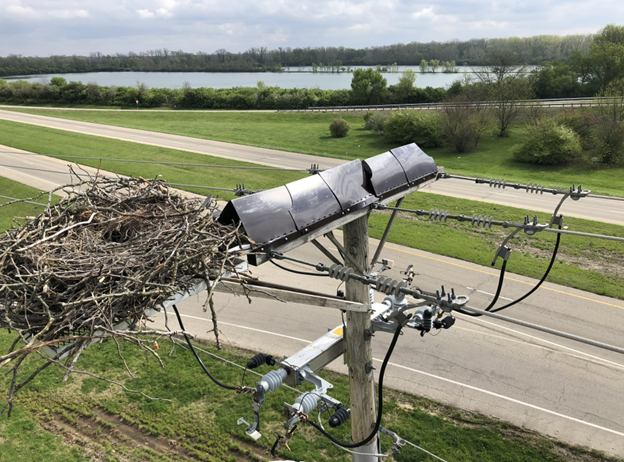How we work to protect wildlife
At AES Ohio we strive to deliver sustainable, safe, and reliable electricity while maintaining the biodiversity which our communities enjoy.
Before we describe how AES Ohio is committed to environmental biodiversity: what is it? Biodiversity is the contraction of biological diversity or the variability of life. It refers to the interconnected forms of life that coexist in ecosystems to maintain balance and support new life. This includes wildlife, plants, fungi and microorganisms. The value of biodiversity can be measured in the benefits to human communities (food production, clean water, medicine, and resources) as well as intrinsic worth.
AES Ohio is guided to promote biodiversity though our commitment to complying with applicable regulations designed to protect the environment, and, thereby, protect biodiversity. These include, for example, the Clean Water Act, the Migratory Bird Treaty Act and the Bald and Golden Eagle Protection Act. Wildlife protection equipment, habitat and ecosystem enhancements, avoidance and minimization measures during construction, operation, and maintenance, and partnerships with stakeholders are all ways to promote biodiversity.
Engineering Wildlife Protections
Overhead electrical infrastructure inherently can create a risk to wildlife. To reduce this risk while also reducing the risk of power outages, AES Ohio implements wildlife protection practices, when practicable, whereby crews are equipped to retrofit our infrastructure with controls designed to prevent wildlife incidents. Some examples of retrofitting actions include:
Pole wrap to prevent pole-climbing wildlife like squirrels and racoons from reaching the electrified components.
Bushing covers, conductor insulators and other controls designed to prevent bird electrocution.
Flight diverters on power lines to alert birds to the presence of lines to reduce the risk of collision. These may be installed where increased bird travel is expected due to nearby habitat, known migratory corridor, nesting suitability or historical incidents.
Nesting platforms to provide alternate locations for birds. AES Ohio is permitted by the United States Fish and Wildlife Service (USFWS) to move an active nest onto a new, safer platform. Some bird species can use electrical infrastructure as nesting foundations. Ospreys are especially drawn to double cross arms on distribution poles located near large waterbodies in the AES Ohio service territory. The birds and / or nesting material can cause the electrified lines to arch which can lead to fire or other safety risks for both the birds and people.

AES Ohio is also committed to developing electrical infrastructure in a way that promotes biodiversity by reducing risk to wildlife. This includes spacing wires in a way that prevents the risk of animals bridging electrified components. AES Ohio is a member of the Avian Power Line Interaction Committee, which partners with the USFWS to promote research and implementation of bird-safe power system designs.
We are proud to serve our communities and we take our role in promoting biodiversity seriously.
